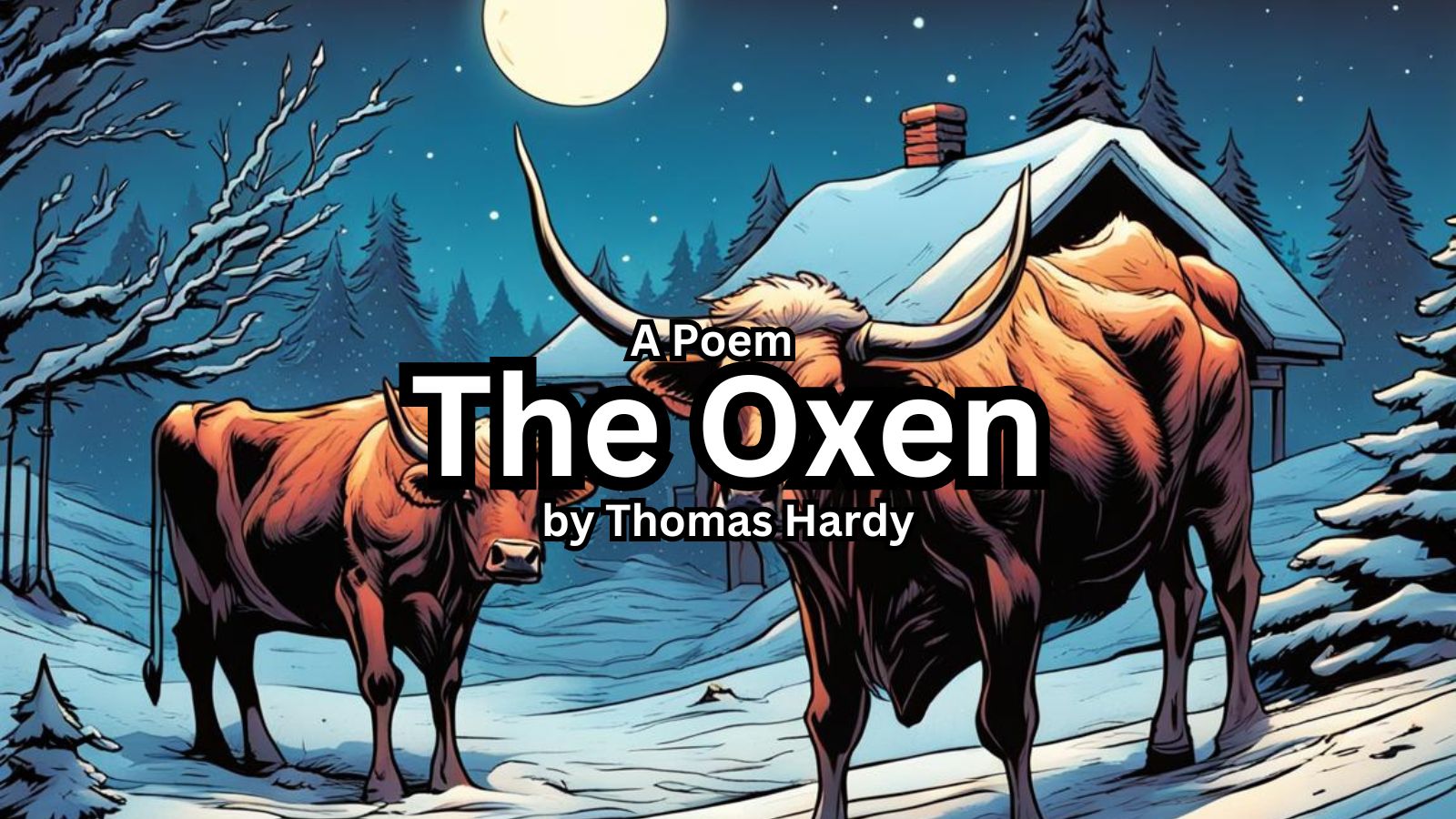The Oxen by Thomas Hardy

The Oxen
by Thomas Hardy
Christmas Eve, and twelve of the clock.
‘Now they are all on their knees,’
An elder said as we sat in a flock
By the embers in hearthside ease.
We pictured the meek mild creatures where
They dwelt in their strawy pen,
Nor did it occur to one of us there
To doubt they were kneeling then.
So fair a fancy few would weave
In these years! Yet, I feel,
If someone said on Christmas Eve,
‘Come; see the oxen kneel
‘In the lonely barton by yonder coomb
Our childhood used to know,’
I should go with him in the gloom,
Hoping it might be so.
###
Thomas Hardy (1840-1928) was an English author best known for his novels set in the semi-fictional land of Wessex. Born in Dorset, Hardy was the son of a stonemason. He trained as an architect before turning to writing full time. Although he wrote several famous novels, including Tess of the d’Urbervilles and Jude the Obscure, Hardy considered himself more of a poet than novelist. Most of his poems reflect on nature, transience of life, and the human condition.
Hardy’s novels often dealt with characters struggling against difficult environments, relationships, and social circumstances – themes tied to his perspective as the son of a working class family. Though considered controversial in the Victorian era for progressive views on sexuality and religion, Hardy’s works were admired for rich storytelling and evocative settings in rural communities and landscapes meant to evoke Dorset life. The detailed, fictional Wessex places were based loosely on regions of southwest England familiar from the author’s upbringing.
A prolific writer, Hardy produced the bulk of his poetry in the decades following his last novel, Jude the Obscure, which received harsh criticism in 1895. In his final years, Hardy gained renown for intensely personal yet accessible verse musing philosophically on 20th century shifts toward modernity. By 1928, Hardy settled back into Dorchester, dying at the age of 87 after establishing himself as one of England’s most renowned writers blending regional realism and poetic romanticism, often around universal themes of love, irony and human suffering.